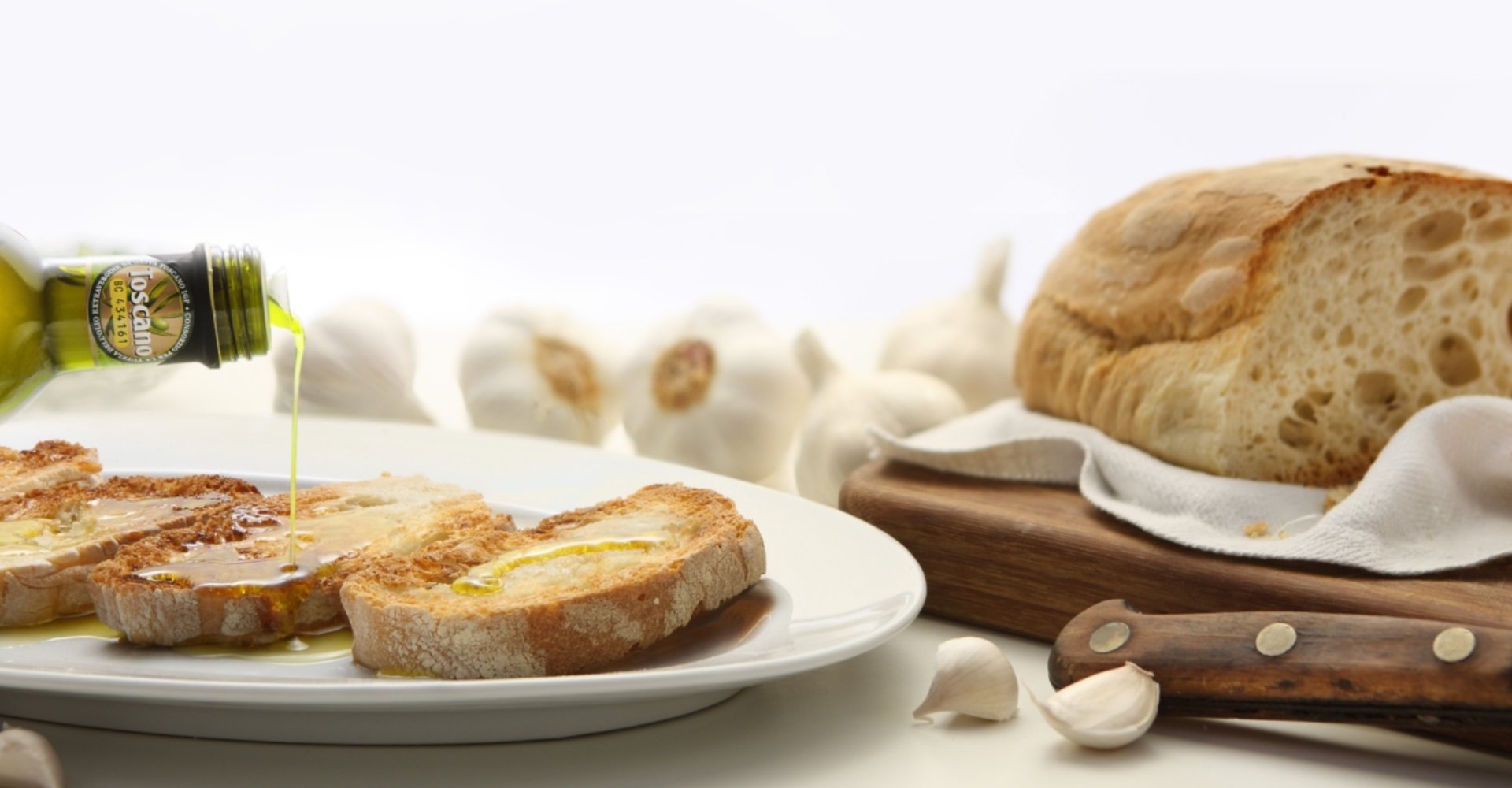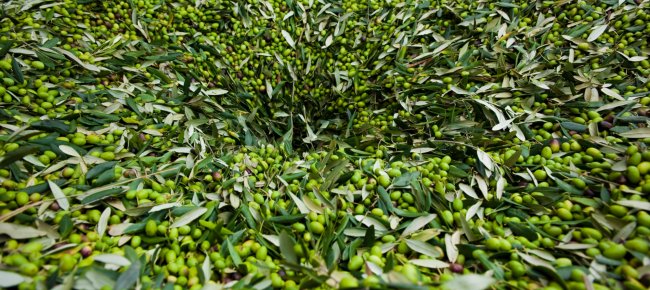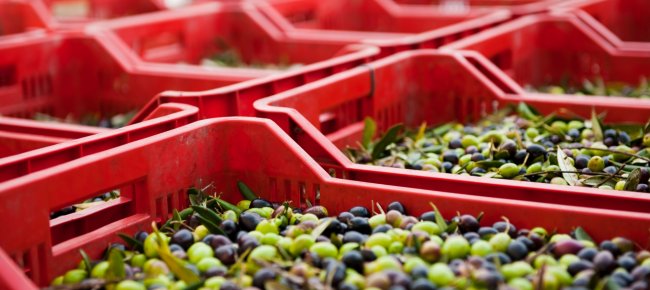Tuscan Extra Virgin Olive Oil PGI

Genuine excellence to be experienced and tasted
Extra virgin olive oil is one of Tuscany's best-loved typical products all over the world.
Since 1998, the region's oil production has been protected by a Protected Geographical Indication, the Toscano PGI, whose regulations stipulate that all stages of the production process (olive production, pressing and packaging) must take place within the administrative territory of the Region of Tuscany.
Characteristics
The varieties used for the production of PGI Tuscan extra virgin olive oil are all native ones, including frantoio, leccino, moraiolo, maurino, leccio del corno, pendolino and correggiolo. The olives must be harvested directly from the tree, either manually, by mechanical means or by "brucatura". Only traditional mechanical and physical processes such as to prevent the alteration of the qualitative characteristics of the fruit are permitted for the extraction of the oil.
The olive tree in Tuscany is distributed everywhere, from the coastal strip to the hilly areas, in a varied environmental context with micro-environmental differences that have also conditioned the behavior of olive growers over time. These factors, together with the great biodiversity (more than 80 native olive varieties classified), contribute to the production of typical oils characterized by some differences from each other. Based on the area of production, there are 8 additional geographical mentions: "Seggiano", "Colline Lucchesi", "Colline della Lunigiana", "Colline di Arezzo", "Colline Senesi", "Colline di Firenze", "Montalbano" and "Monti Pisani".
The varieties used for the production of PGI Tuscan extra virgin olive oil are all native ones, including frantoio, leccino, moraiolo, maurino, leccio del corno, pendolino and correggiolo. The olives must be harvested directly from the tree, either manually, by mechanical means or by "brucatura". Only traditional mechanical and physical processes such as to prevent the alteration of the qualitative characteristics of the fruit are permitted for the extraction of the oil.
The olive tree in Tuscany is distributed everywhere, from the coastal strip to the hilly areas, in a varied environmental context with micro-environmental differences that have also conditioned the behavior of olive growers over time. These factors, together with the great biodiversity (more than 80 native olive varieties classified), contribute to the production of typical oils characterized by some differences from each other. Based on the area of production, there are 8 additional geographical mentions: "Seggiano", "Colline Lucchesi", "Colline della Lunigiana", "Colline di Arezzo", "Colline Senesi", "Colline di Firenze", "Montalbano" and "Monti Pisani".
Food and wine
PGI Tuscan extra virgin olive oil normally has a more or less intense green color in the newly obtained oil, which, with the passage of time, tends to turn to yellow, while still maintaining green reflections. The smell is reminiscent of green vegetable scents with rounded final sensations, a more or less evident bitter note and spicy sensation is always present in the taste. Extra virgin olive oil Toscano PGI is ideal for seasoning raw and cooked vegetables, especially boiled, but also soups, fish and grilled meat.
PGI Tuscan extra virgin olive oil normally has a more or less intense green color in the newly obtained oil, which, with the passage of time, tends to turn to yellow, while still maintaining green reflections. The smell is reminiscent of green vegetable scents with rounded final sensations, a more or less evident bitter note and spicy sensation is always present in the taste. Extra virgin olive oil Toscano PGI is ideal for seasoning raw and cooked vegetables, especially boiled, but also soups, fish and grilled meat.





